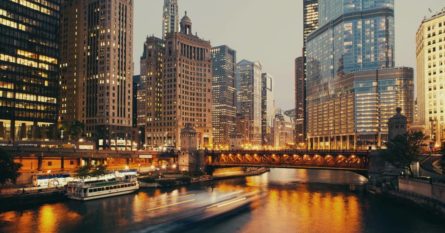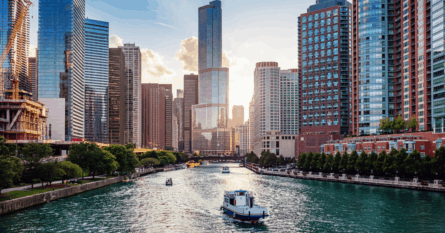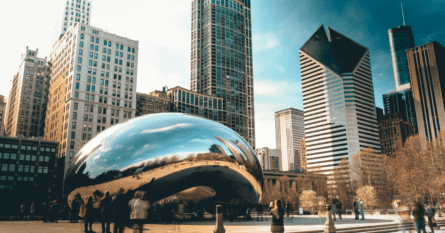Chicago offers visitors a wide spectrum of sights, shopping, and activities.
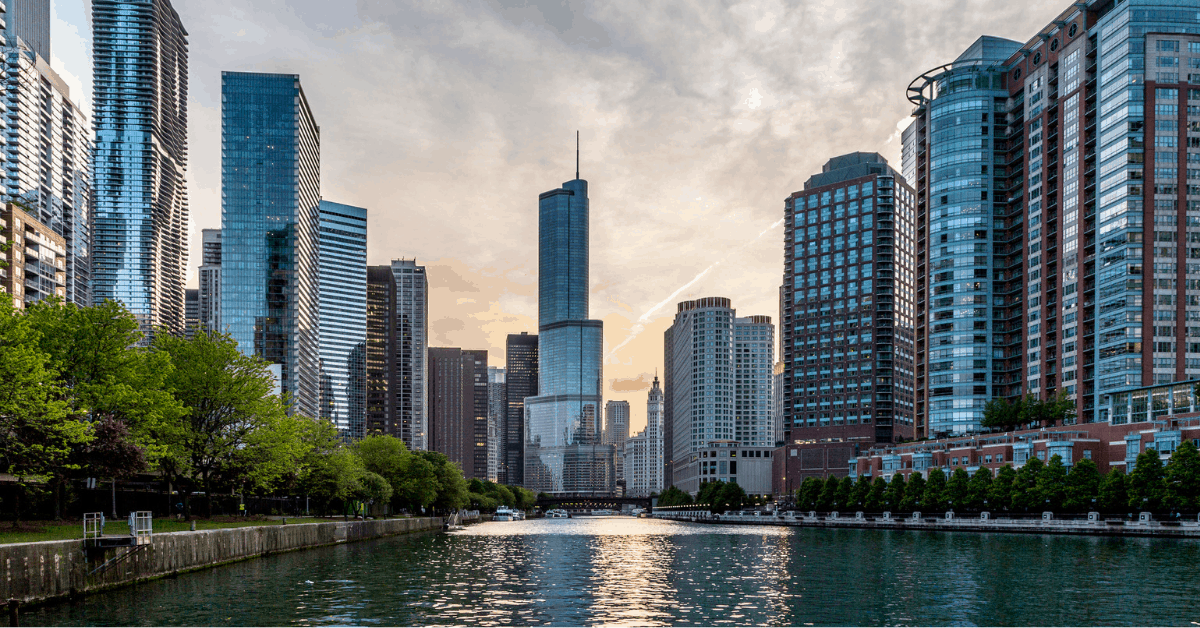
In the 1830s, as Chicago was organizing itself as a city, its founders were committed to great swaths of public green space, adopting the Latin term “Urbs in Horto” which means “City in a Garden,” as their motto.
While the great fire of 1871 ruined most of Chicago’s bustling downtown, it also cleared the way to create master-planned public parks, including stretches along Lake Michigan. The city of Chicago is continually updating, expanding, and renovating its parks and architecture, adding playgrounds, gardens, and amenities, reinforcing the city’s unwavering faithfulness to its civic identity and pride.
Art, parks, and a Russian tea house
The Art Institute of Chicago is famous for its vast collection of Impressionist masters, its sweeping special exhibits, and its Modern Wing, designed by architect Renzo Piano. The Institute is a perfect spot for a cold or rainy day as it offers a wide variety of permanent exhibits, including artifacts from ancient China to the history of photography.
Take a break at Russian Tea Time across the street from the main entrance to the Art Institute. A holdover from the days of luxurious Loop shopping, it is a brief immersion in the Russian aesthetic, both culinary and visual, with its elaborate decorations and floral teas.
The Lurie Garden sits just across the street and is an often-overlooked oasis in any season, full of mostly native green plants, punctuated by blooming perennials. It’s easy to miss with its high-hedged borders, but stepping into the garden is like entering a secret room. A few paths criss-cross the waist-high grasses and prairie flowers. Benches line a quiet stream, offering a place to relax.
Immediately north of the Lurie Garden are Chicago’s famed lakefront parks: Grant Park and Maggie Daley Park, the latter of which is named after the beloved late wife of longtime former mayor Richard M. Daley. If you have the time and inclination, clamber up the climbing wall (reservations required) or ice-skate (if it’s winter).
A walk along a backward river
The Chicago River used to flow east into Lake Michigan but thanks to determined engineering, it was reversed in the early 20th-century to feed the state’s new network of canals. The river is now a ribbon of sparkling water that runs by rows of glittering steel, glass, and concrete skyscrapers.
The riverfront is open year-round but is not really accessible in winter. From early spring through November, though, it offers a chance to look skyscrapers at ground level and close up. It’s worth a jaunt even for the 10 minutes it takes to walk from one bridge to the next. In season, cafes dotted along the riverfront are open for coffee, lunch, and dinner.
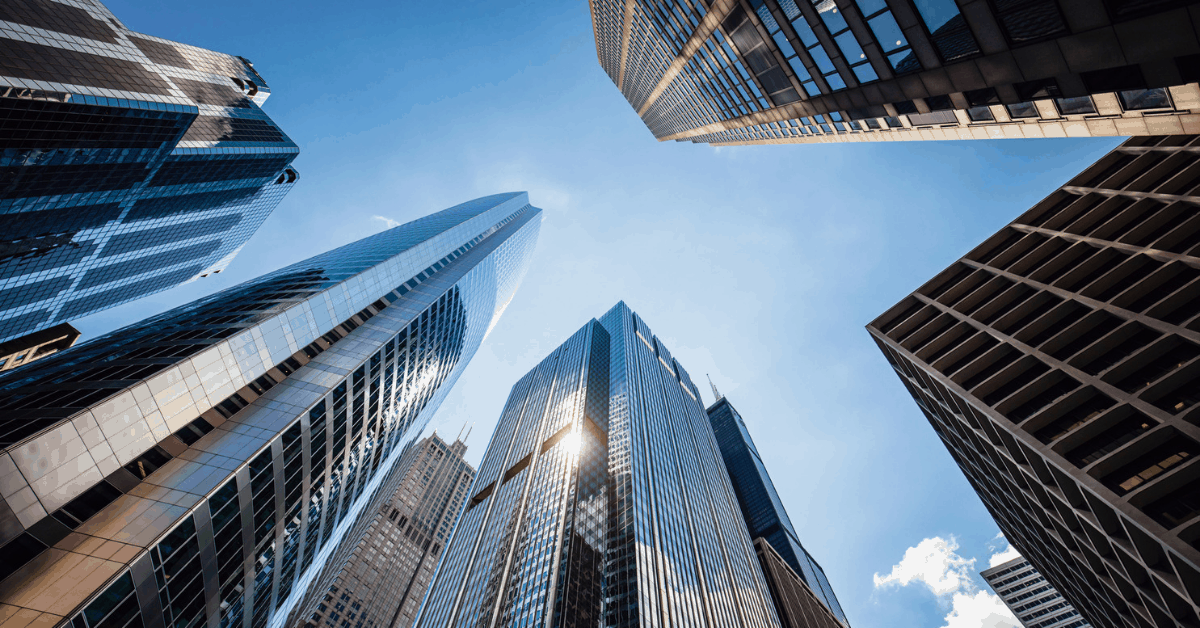
North of the river is the Magnificent Mile, a stretch of North Michigan Ave., which is Chicago’s glitziest shopping district. The area surrounding the Magnificent Mile is known as River North because, you guessed it, it’s north of the river. South of the river is the famed central business known as the Loop (named after the elevated train that loops around).
Squalls brew unpredictably and frequently as dry prairie winds collide with cool, moist Lake Michigan air. And, it’s true: it’s cooler by the lake and by the river. Even on hot days, knot a scarf or light sweater around your neck in case of sudden chill, and bring a travel umbrella.
Architectural walking tours of State Street
The Chicago Architecture Center is the go-to for all architecture tours, from river cruises to self-guided walking tours of the Loop and neighborhoods, to special events that offer behind-the-scenes close-ups of the details and design of some of Chicago’s most important buildings. While several companies offer cruises of the lake and river, from embarkation points along the river and at Navy Pier, only the Architecture Center offers narrative sure to be historically correct.
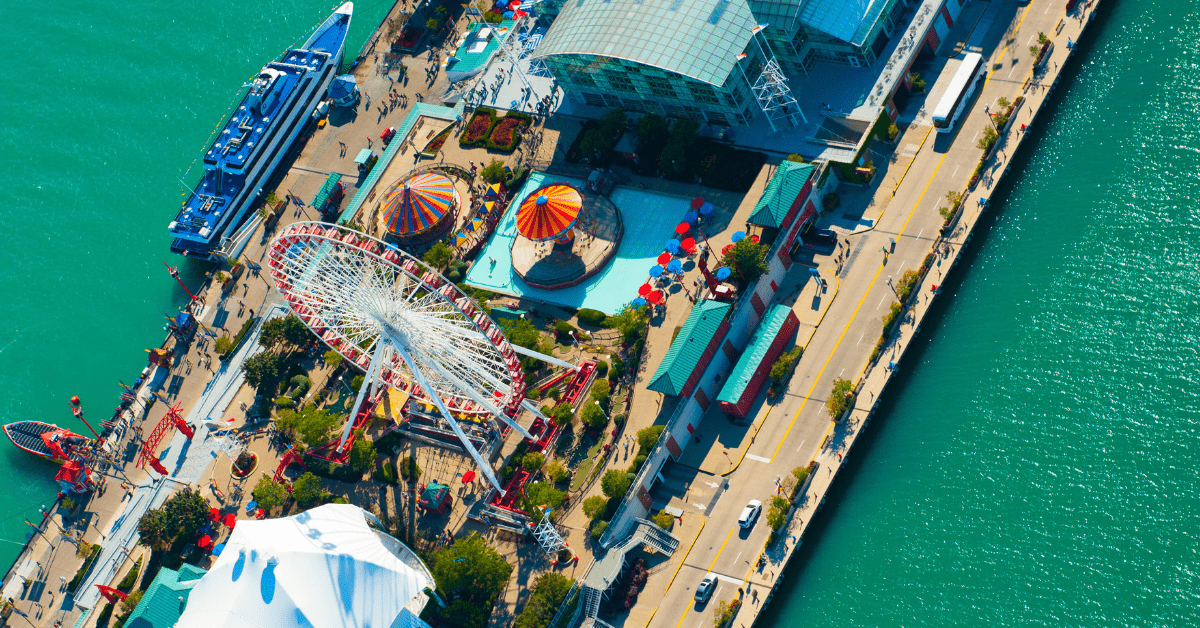
Whether you tackle it from Adams St. going north, or from East Wacker going south, a 20-minute walk into the heart of the Loop, along eight blocks of State Street, offers a telescoped view of the city’s architectural history. The famed clock of the old Marshall Field’s department store at the corner of Randolph St. and State St. marks the site of one of the grand old retail dynasties.
At State and Madison, the filigree decorating the site of the original Carson Pirie Scott department store (now occupied by a Target store) also marks ground zero for Chicago streets. The intersection marks the center point from which streets are north, south, east or west, the logic imposed on the post-Fire resurrection of the Loop.
One block south, detour to the Merz Apothecary off the lobby of the Palmer House Hotel. This old-fashioned shop is an outpost of a shop founded in 1872 in a Chicago neighborhood settled by European immigrants. Its buyers scout out regionally produced products – beer soap, anyone? – and hard-to-find imports.
Views and a zoo
Whether you crave a gander at a gander or prefer an uninterrupted stretch of walking, head to Lincoln Park Zoo, immediately north of the Michigan Ave. shopping and hotel district. The Zoo is free and open year-round, and is surrounded by sprawling lawns and lagoons that mirror the sky, and, when the sun is right, the skyline.
The Chicago History Museum anchors the southern corner of the park and has a rotating exhibition schedule that often focuses on fashion, photography, and urban development. The museum’s gift shop offers one of the city’s best arrays of books about history and culture and souvenirs you won’t find anywhere else.
Where to eat
The Signature Room, on the 95th floor of the John Hancock Tower at 875 N. Michigan Ave offers up unrivaled views out to the city.
In the spring and fall, fog often banks the skyscrapers along Lake Michigan, creating a castle-in-the-air effect when only their top floors pierce the low clouds. While the fog is picturesque, it can obscure usually-reliable landmarks, so be sure to check the weather before you visit.
Beatnik offers small plates with attitude, served under fantastical chandeliers on cushy banquettes. Its menu delivers fresh, international takes on classics from around the world, including shakshuka with duck egg and Lebanese-style roast lamb.
The Girl and the Goat, in Chicago’s fast-growing West Loop, is the home base for celebrity chef and hometown hero Stephanie Izard. The restaurant showcases a rotation of Midwest and Chicago-made specialties, including craft beers. If weather permits, try for a table on the rooftop deck.
Where to stay
Book a room at W Chicago – Lakeshore and stay within walking distance of the activities-packed Navy Pier. Request a room with a lake view and enjoy breakfast watching the sun rise over the water.
The Intercontinental Hotel sits in the center of Michigan Ave. and is also within easy walking distance of the riverfront and Loop. Request a room in the historic section of the hotel for an inside look at decorative details from the roaring twenties.
Staypineapple in the Loop occupies a building on the National Register of Historic Places and is just a short walk from Millenium Park. Its ground-level Atwood Café offers one of the best hotel breakfasts in the city and is the perfect perch for people-watching.
